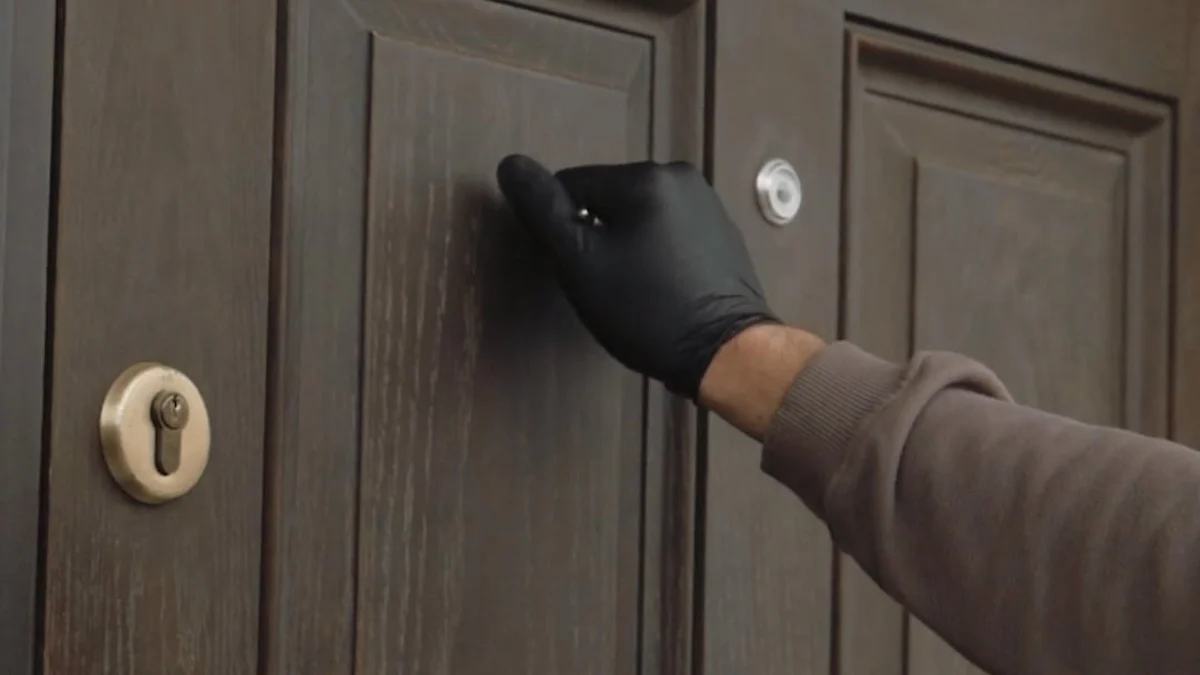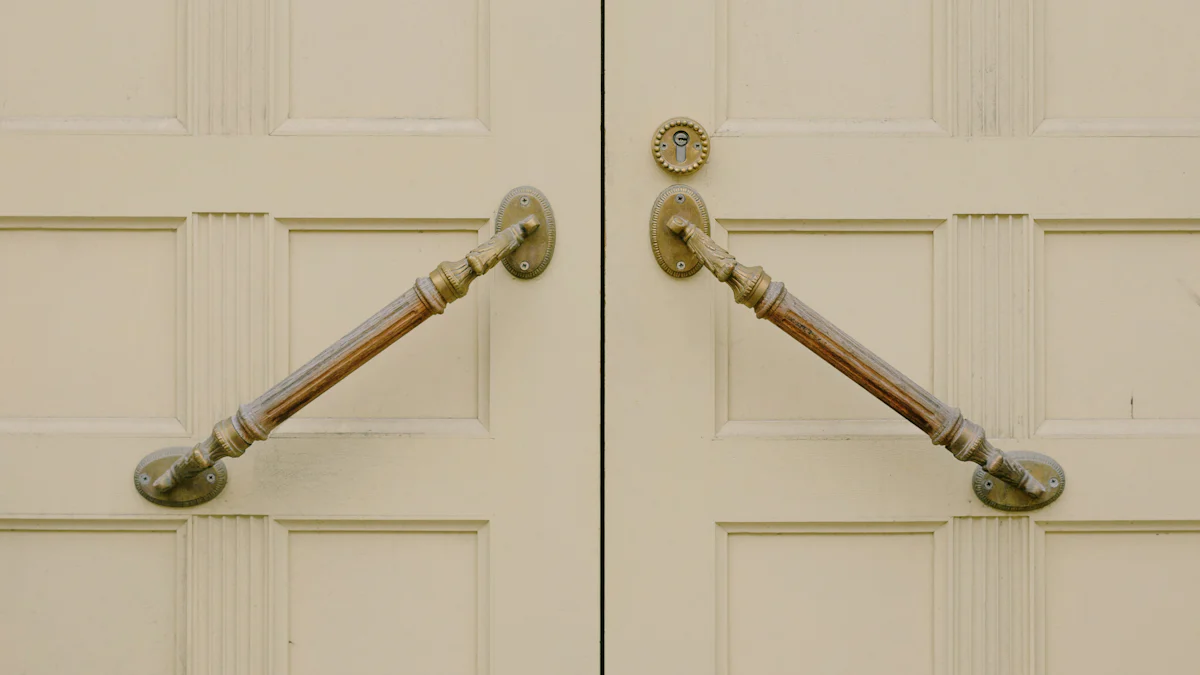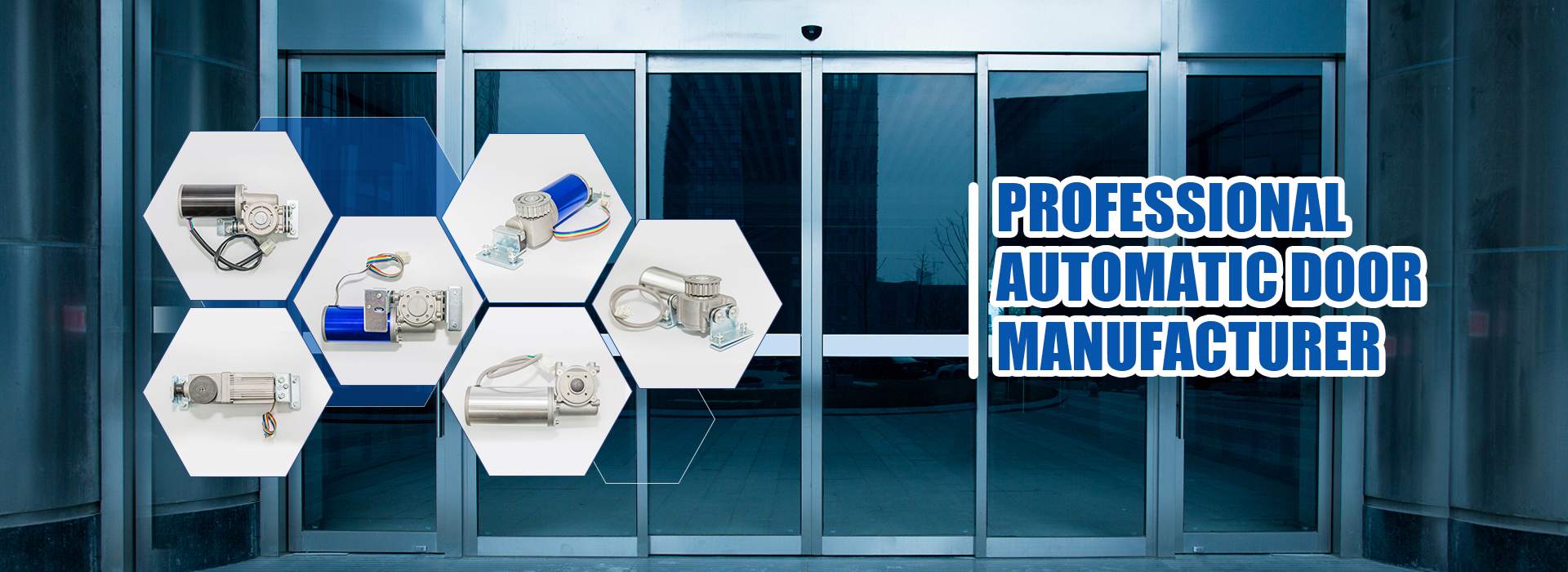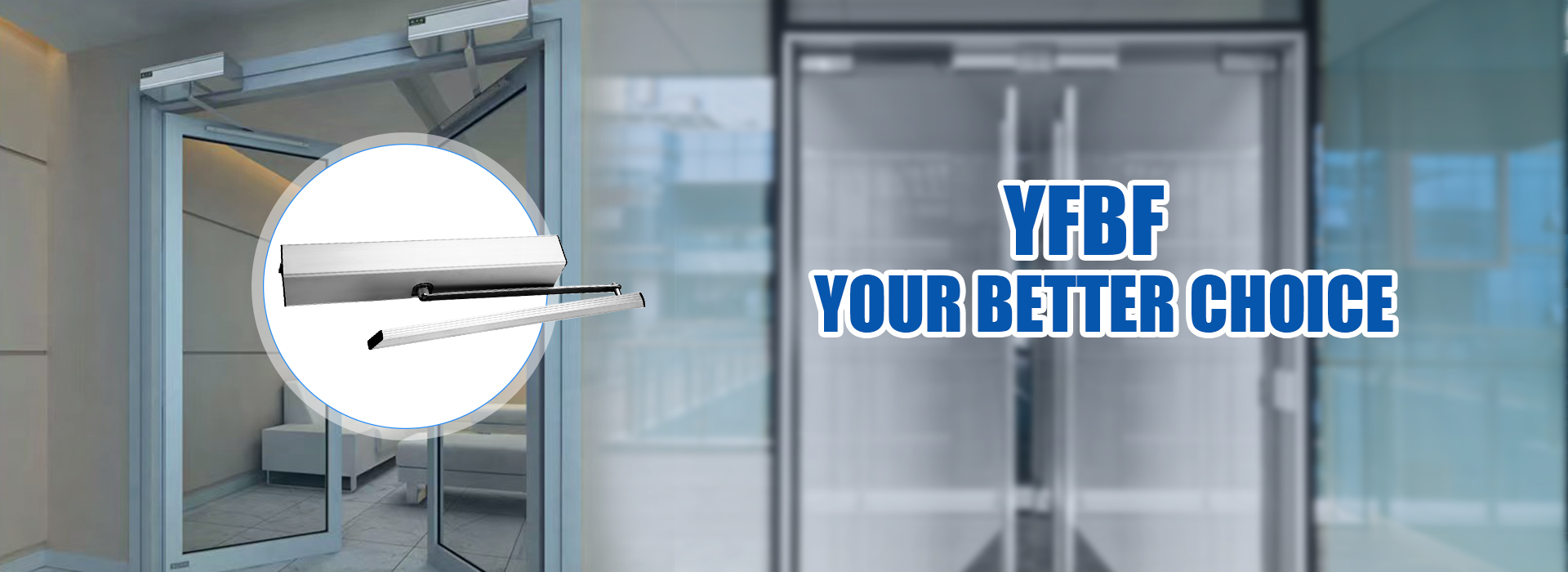
Proper installation of an automatic door motor system ensures both safety and optimal performance. Incorrect setups can lead to accidents, including lacerations or blunt force trauma, which highlights the critical need for precision during installation. Automatic door systems offer significant benefits, making them a preferred choice for 98.9% of consumers. These systems enhance convenience by enabling hands-free operation and improve security by integrating advanced technology. Choosing a reliable Automatic Door Motor factory guarantees durable components, ensuring long-term functionality and user satisfaction.
Key Takeaways
- Proper installation of an automatic door motor system is crucial for safety and optimal performance; always follow manufacturer guidelines.
- Gather all necessary tools and materials beforehand, including screwdrivers, a power drill, and safety gear, to streamline the installation process.
- Verify door compatibility and perform safety checks before installation to prevent complications and ensure a secure setup.
- Test the door’s functionality multiple times after installation to confirm smooth operation and make necessary adjustments to motor speed and sensitivity.
- Regular maintenance, including cleaning and lubrication, is essential to prolong the lifespan and efficiency of the automatic door system.
- Choose a reputable Automatic Door Motor factory, like Ningbo Beifan, to ensure high-quality components and reliable customer support.
- Seek professional assistance for complex installations or persistent issues to guarantee safety and functionality.
Tools and Materials Needed

Proper installation of an automatic door motor system requires the right tools and materials. Using the correct equipment ensures a smooth process and guarantees the system’s safety and reliability. Below is a detailed breakdown of the essential tools and materials needed for the task.
Essential Tools
Screwdrivers (flathead and Phillips)
Screwdrivers are indispensable for securing screws during the installation process. Both flathead and Phillips screwdrivers are necessary to accommodate different screw types included in the motor kit.
Power Drill and Drill Bits
A power drill speeds up the process of creating holes for mounting brackets and screws. Selecting the appropriate drill bits ensures precision and prevents damage to the wall or door frame.
Measuring Tape
Accurate measurements are crucial for aligning the track and motor. A measuring tape helps determine the exact placement of components, reducing the risk of misalignment.
Level
A level ensures that the track and other components are perfectly horizontal or vertical. Proper alignment prevents operational issues and extends the system’s lifespan.
Wrenches and Pliers
Wrenches and pliers assist in tightening bolts and securing hardware. These tools provide the necessary grip and torque to ensure all components remain firmly in place.
Required Materials
Automatic Door Motor Kit (Motor, Track, Controller, Sensors, etc.)
The motor kit serves as the core of the installation. It typically includes the motor, track, controller, and sensors. Choosing a high-quality kit, such as those from Ningbo Beifan Automatic Door Factory, ensures durability and reliable performance.
Screws, Bolts, and Mounting Brackets
These components secure the motor, track, and other parts to the wall and door frame. Using the correct size and type of fasteners prevents instability and ensures a safe installation.
Electrical Wiring and Connectors
Electrical wiring connects the motor, controller, and sensors. High-quality connectors ensure stable electrical connections, reducing the risk of malfunctions.
Safety Gear (Gloves, Goggles, etc.)
Safety gear protects the installer from potential hazards. Gloves prevent injuries from sharp edges, while goggles shield the eyes from debris during drilling or cutting.
“The lack of proper tools and knowledge can compromise safety and reliability during installation.” This highlights the importance of having the right equipment and understanding the process.
By gathering these tools and materials beforehand, installers can streamline the process and achieve a professional-grade installation.
Preparation Steps
Proper preparation ensures a smooth and efficient installation process. Skipping these steps can lead to complications or safety hazards. Follow these guidelines to verify compatibility, ensure safety, and understand the system’s components.
Verify Door Compatibility
Check the door type (sliding, swinging, etc.) and weight capacity.
The first step involves assessing the door’s type and weight. Sliding doors require a different motor system compared to swinging doors. Confirm that the motor kit matches the door’s specifications. Additionally, check the weight capacity of the motor to ensure it can handle the door’s weight without strain.
Ensure the door frame is sturdy and aligned.
Inspect the door frame for structural integrity. A sturdy and well-aligned frame provides the necessary support for the motor system. Misaligned or weak frames may cause operational issues or damage the system over time. Reinforce the frame if needed before proceeding with the installation.
Perform Safety Checks
Turn off power supply to the installation area.
Safety should always be a priority. Disconnect the power supply to the installation area to prevent electrical accidents. This precaution protects the installer from potential shocks during wiring or component setup.
Clear the workspace of any obstacles.
A clutter-free workspace minimizes risks and enhances efficiency. Remove any objects or debris near the installation site. This step ensures unobstructed movement and reduces the likelihood of accidents.
“Compliance with safety measures is essential for the proper functioning of automatic doors.” Regular safety checks not only protect the installer but also contribute to the long-term reliability of the system.
Read the Manufacturer’s Manual
Familiarize yourself with the components and instructions provided.
The manufacturer’s manual serves as a comprehensive guide for the installation process. Take time to review the instructions and understand the purpose of each component. This step reduces errors and ensures that the system operates as intended.
“Although an annual check-up by a skilled technician is the bare minimum, understanding the system during installation lays the foundation for smooth functionality.” Familiarity with the manual also aids in troubleshooting and maintenance in the future.
By completing these preparation steps, installers can avoid common pitfalls and set the stage for a successful installation.
Step-by-Step Installation Process

Install the Track
Fix the track on the wall, ensuring proper alignment.
Begin by positioning the track on the wall where the door will operate. Use a measuring tape to confirm the alignment matches the door’s movement path. Mark the points for drilling holes to secure the track. A level ensures the track remains perfectly horizontal, which is critical for smooth door operation.
“Proper alignment prevents operational issues and extends the system’s lifespan.” This principle underscores the importance of precision during this step.
Secure the track with screws and brackets.
Drill holes at the marked points and attach the track using screws and mounting brackets. Tighten the screws firmly to avoid any wobbling or instability. Double-check the alignment after securing the track to ensure it remains straight and level.
Install the Motor
Mount the motor securely to the track.
Position the motor at the designated spot on the track. Use the provided hardware from the motor kit to attach it securely. Ensure the motor sits firmly in place without any loose components. A stable motor setup minimizes vibrations and enhances the system’s durability.
Ensure the motor is aligned with the door’s movement.
Align the motor with the door’s movement path to prevent strain on the system. Misalignment can lead to operational inefficiencies or damage over time. Adjust the motor’s position if necessary to achieve perfect alignment.
“If their attempts do not eliminate the issue, an expert is called in with more technology to adequately evaluate the motor system and offer guidance on next steps.” This advice from maintenance staff highlights the importance of proper alignment during installation to avoid future complications.
Install the Controller and Sensors
Mount the controller unit near the door for easy access.
Choose a location near the door to install the controller unit. This placement ensures convenient access for adjustments or troubleshooting. Secure the controller to the wall using screws or brackets, following the manufacturer’s instructions.
Install motion sensors or push-button controls as required.
Position the motion sensors or push-button controls according to the system’s design. For motion sensors, place them at a height and angle that optimizes their detection range. Push-button controls should be installed at an accessible height for users. Secure these components firmly to prevent misalignment during use.
Connect the wiring between the motor, controller, and sensors.
Use the electrical wiring provided in the motor kit to connect the motor, controller, and sensors. Follow the wiring diagram in the manufacturer’s manual to ensure accurate connections. Double-check each connection to confirm stability and prevent electrical malfunctions.
“Compliance with safety measures is essential for the proper functioning of automatic doors.” This statement reinforces the need for careful wiring to maintain system reliability and safety.
By following these steps meticulously, installers can ensure a seamless and professional-grade installation.
Attach the Door to the Track
Secure the door to the track using the provided hardware.
Position the door carefully along the track, ensuring it aligns with the motor and other components. Use the hardware included in the motor kit to attach the door securely. Tighten all screws and bolts to prevent any wobbling or instability during operation. A firm attachment ensures the door remains steady and functions as intended. Installers should double-check each connection point to confirm the door is properly secured.
“If their attempts do not eliminate the issue, an expert is called in with more technology to adequately evaluate the motor system and offer guidance on next steps.” This insight from maintenance professionals highlights the importance of precision during this stage to avoid future complications.
Ensure the door moves smoothly along the track.
Manually slide the door along the track to test its movement. Observe for any resistance or irregularities. If the door does not glide smoothly, inspect the alignment and adjust as necessary. Lubricate the track lightly if friction persists, but avoid over-application to prevent dust accumulation. A smooth-moving door indicates proper installation and alignment, which are critical for long-term performance.
Power Up the System
Connect the system to the power supply.
Locate the designated power source and connect the system following the manufacturer’s instructions. Ensure all electrical connections are secure and match the wiring diagram provided in the manual. Proper connections reduce the risk of electrical malfunctions and ensure the system operates efficiently. Installers should handle this step with care to maintain safety and functionality.
Double-check all connections for safety.
Before activating the system, review every connection point. Verify that the motor, controller, sensors, and power supply are correctly linked. Inspect the wiring for any loose ends or exposed sections. Tighten any components that appear unstable. This final check ensures the system is safe to use and minimizes the likelihood of operational issues.
“Compliance with safety measures is essential for the proper functioning of automatic doors.” This principle underscores the importance of thorough inspections before powering up the system.
Testing and Adjustments
Test the Door’s Functionality
Open and close the door multiple times to ensure smooth operation.
Testing the door’s functionality begins with repeated opening and closing cycles. This step ensures the system operates smoothly without interruptions. Observing the door’s movement helps identify any irregularities, such as jerking or hesitation. Installers should pay close attention to the alignment of the door along the track. Smooth operation indicates that the motor, track, and other components have been installed correctly.
“Regular testing ensures that automatic doors meet safety and performance standards,” according to MGS UK, a company specializing in health and safety compliance for automatic doors. This practice not only confirms proper installation but also prevents potential issues from escalating.
Check the response of sensors or controls.
Sensors and controls play a critical role in the system’s functionality. Testing these components involves activating the sensors or controls to verify their responsiveness. For motion sensors, installers should walk into the detection range to confirm the door opens promptly. Push-button controls require pressing the button to trigger the door’s movement. Any delays or failures in response may indicate misalignment or wiring issues. Adjusting the sensor angle or rechecking the wiring connections can resolve these problems.
“Safety inspections and weekly checks are crucial for maintaining compliance and ensuring user safety,” as emphasized by various experts in the field. Regularly testing sensors and controls guarantees reliable performance and minimizes risks.
Make Necessary Adjustments
Adjust the motor speed and sensitivity settings.
Fine-tuning the motor’s speed and sensitivity settings optimizes the door’s performance. The motor speed determines how quickly the door opens and closes, while sensitivity settings control the responsiveness of sensors. Adjusting these parameters ensures the system meets user preferences and safety requirements. For instance, reducing the motor speed can enhance safety in high-traffic areas, while increasing sensitivity improves the door’s responsiveness to motion.
“Professional installation ensures that all settings are calibrated for optimal performance,” according to Olide Auto Door, a leader in automatic swing door systems. Proper adjustments during installation prevent the need for frequent recalibrations.
Tighten or realign components if needed.
Loose or misaligned components can compromise the system’s functionality and safety. Inspecting the track, motor, and mounting brackets helps identify any issues. Tightening screws and bolts ensures stability, while realigning components corrects any deviations from the intended setup. These adjustments enhance the door’s smooth operation and extend the system’s lifespan.
“Expert installation plays a vital role in preventing operational issues,” as highlighted by Secure Lock & Alarm. Addressing alignment and stability during the adjustment phase ensures the system remains reliable over time.
By thoroughly testing and making necessary adjustments, installers can guarantee a seamless and safe operation of the automatic door motor system. Regular checks and fine-tuning not only enhance performance but also ensure compliance with safety standards.
Maintenance Tips
Proper maintenance ensures the longevity and optimal performance of an automatic door motor system. Regular upkeep minimizes the risk of malfunctions and enhances safety. Following these maintenance tips will help users keep their systems in excellent condition.
Regular Cleaning
Clean the track and sensors to prevent dust buildup.
Dust and debris can accumulate on the track and sensors over time, hindering the system’s functionality. Cleaning these components regularly ensures smooth operation. Use a soft cloth or brush to remove dirt from the track. For sensors, gently wipe the lenses with a microfiber cloth to maintain their sensitivity. Avoid using harsh chemicals, as they may damage the components.
“Routine cleaning prevents operational issues and extends the lifespan of automatic doors,” as emphasized by industry experts. This simple practice ensures the system remains reliable and efficient.
Lubricate moving parts as recommended.
Lubrication reduces friction between moving parts, ensuring smooth and quiet operation. Apply a manufacturer-recommended lubricant to the track, rollers, and hinges. Avoid over-lubricating, as excess grease can attract dust and debris. Regular lubrication not only enhances performance but also prevents wear and tear on critical components.
“Proper lubrication minimizes mechanical strain and prolongs the life of the motor system,” according to maintenance professionals. This step is essential for maintaining the system’s efficiency.
Periodic Inspections
Check for loose screws or worn-out components.
Over time, screws and bolts may loosen due to vibrations and regular use. Inspect all hardware periodically to ensure everything remains secure. Tighten any loose screws and replace worn-out components immediately. Neglecting this step can lead to instability and potential safety hazards.
“Technicians often find that regular inspections prevent costly repairs,” as noted by Secure Lock and Alarm. Addressing minor issues early avoids major complications later.
Test the system’s functionality every few months.
Frequent testing ensures the system operates as intended. Open and close the door multiple times to check for smooth movement. Test the sensors and controls to confirm their responsiveness. If any irregularities arise, troubleshoot the issue or consult a professional technician for assistance.
“Our technicians offer maintenance and repair services if a door is broken or malfunctions,” highlights the importance of professional support. Regular testing identifies problems early, ensuring the system remains safe and functional.
By adhering to these maintenance tips, users can maximize the efficiency and durability of their automatic door motor systems. Routine care not only enhances performance but also ensures the safety and satisfaction of all users.
Troubleshooting Common Issues
Automatic door motor systems may occasionally encounter operational issues. Identifying and resolving these problems promptly ensures the system’s reliability and safety. Below are common issues and practical solutions to address them effectively.
Door Not Moving
Check the power supply and wiring connections.
When the door fails to move, the first step involves inspecting the power supply. Ensure the system receives adequate power by verifying the connection to the electrical outlet. Examine the wiring for any loose or disconnected cables. Faulty wiring often disrupts the motor’s functionality. Reconnect or replace damaged wires to restore power flow.
“Regular upkeep ensures optimal performance and longevity,” as emphasized by maintenance professionals. Routine checks of the power supply and wiring prevent unexpected interruptions.
Inspect the motor for any obstructions.
Obstructions in the motor can hinder its operation. Examine the motor housing for debris, dust, or foreign objects. Remove any blockages carefully to avoid damaging internal components. Additionally, check for signs of wear or overheating, which may indicate the need for professional servicing.
Sensors Not Responding
Clean the sensor lenses and check alignment.
Non-responsive sensors often result from dirt or misalignment. Clean the sensor lenses using a soft, lint-free cloth to remove dust and smudges. Ensure the sensors align correctly with their designated detection zones. Misaligned sensors fail to detect motion accurately, leading to operational delays.
“Routine maintenance optimizes performance and minimizes wear and tear,” highlighting the importance of keeping sensors clean and properly aligned.
Replace batteries if applicable.
Some sensors operate on batteries, which may deplete over time. Inspect the battery compartment and replace old batteries with new ones. Use the type recommended by the manufacturer to ensure compatibility. Testing the sensors after battery replacement confirms their functionality.
Unusual Noises
Lubricate the track and motor components.
Unusual noises often indicate friction between moving parts. Apply a manufacturer-approved lubricant to the track, rollers, and motor components. Proper lubrication reduces mechanical strain and ensures smooth operation. Avoid excessive application, as it may attract dust and debris.
“Routine cleaning and lubrication prevent operational issues,” reinforcing the value of regular maintenance for automatic door systems.
Tighten any loose screws or bolts.
Loose screws or bolts can cause rattling or grinding sounds. Inspect all hardware, including the track, motor, and mounting brackets. Tighten any loose components using the appropriate tools. Secure connections enhance stability and eliminate unnecessary noise.
By addressing these common issues, users can maintain the efficiency and safety of their automatic door motor systems. Regular inspections and timely interventions not only resolve problems but also extend the system’s lifespan.
When to Seek Professional Assistance
Complex Installations
For heavy or custom doors requiring specialized equipment.
Some installations demand expertise beyond the scope of standard procedures. Heavy or custom doors often require specialized tools and advanced techniques to ensure proper setup. These doors may include unique designs, non-standard dimensions, or materials that exceed the weight capacity of typical motor systems. Attempting to install such systems without professional assistance can lead to structural damage or operational inefficiencies.
Professionals possess the necessary equipment and technical knowledge to handle these challenges. They assess the door’s specifications, select the appropriate motor system, and ensure precise alignment. Their expertise minimizes risks and guarantees a seamless installation.
“Automatic doors provide better access for everyone, boosting employee and visitor satisfaction,” as highlighted in studies. Professional installation ensures these benefits are fully realized, especially for complex setups.
Persistent Issues
If troubleshooting does not resolve the problem.
Persistent operational issues often indicate underlying problems that require expert intervention. Common troubleshooting steps, such as checking wiring connections or cleaning sensors, may not address deeper mechanical or electrical faults. Ignoring these issues can compromise safety and reduce the system’s lifespan.
Professional technicians diagnose and resolve such problems effectively. They use advanced diagnostic tools to identify faults in the motor, sensors, or controller. Their experience allows them to implement long-term solutions, restoring the system’s functionality and reliability.
“Automatic door systems offer convenience, accessibility, and energy efficiency,” according to industry findings. Regular maintenance and timely professional assistance ensure these advantages remain intact.
Seeking professional help for complex installations or unresolved issues ensures the automatic door motor system operates safely and efficiently. This approach not only protects the investment but also enhances user satisfaction and convenience.
Benefits of an Automatic Door Motor System
Convenience and Accessibility
Hands-free operation for ease of use.
Automatic door motor systems provide unparalleled convenience by enabling hands-free operation. Users can effortlessly enter or exit spaces without the need to physically open or close doors. This feature proves especially beneficial in environments such as hospitals, shopping malls, and office buildings, where individuals often carry items or require quick access.
Hands-free operation also enhances accessibility for individuals with mobility challenges. By eliminating the need for manual effort, these systems create a more inclusive environment. For example, automatic doors equipped with motion sensors or push-button controls allow wheelchair users to navigate spaces with ease.
“Automatic doors provide better access for everyone, boosting employee and visitor satisfaction,” as noted in industry studies. This functionality not only improves user experience but also aligns with modern accessibility standards.
Enhanced Security
Integration with smart home systems for added safety.
Automatic door motor systems significantly enhance security by integrating with advanced smart home technologies. These systems can connect to security cameras, alarm systems, and mobile applications, allowing users to monitor and control door access remotely. For instance, homeowners can receive real-time notifications when the door opens or closes, ensuring peace of mind even when away from home.
In commercial settings, automatic doors with integrated access control systems restrict entry to authorized personnel only. Features such as biometric scanners or RFID card readers add an extra layer of protection. This level of security reduces the risk of unauthorized access and safeguards valuable assets.
“Regular upkeep ensures optimal performance and longevity,” as emphasized by maintenance professionals. When paired with professional installation from a reputable Automatic Door Motor factory, these systems deliver both reliability and enhanced safety.
The combination of convenience, accessibility, and security makes automatic door motor systems an essential feature in modern architecture. Their ability to adapt to diverse needs ensures they remain a valuable investment for residential and commercial spaces alike.
Choosing an Automatic Door Motor Factory
Selecting the right Automatic Door Motor factory plays a crucial role in ensuring the durability, reliability, and overall performance of the system. A well-chosen factory not only provides high-quality products but also offers support that enhances user satisfaction and long-term functionality.
Importance of Quality Manufacturing
Look for factories with a strong reputation, such as Ningbo Beifan Automatic Door Factory.
A factory’s reputation reflects its commitment to quality and customer satisfaction. Established manufacturers, like Ningbo Beifan Automatic Door Factory, have built their credibility through years of consistent performance and innovation. Founded in 2007, this factory specializes in producing automatic door motors and operators, making it a trusted name in the industry.
Factories with a strong reputation often adhere to stringent quality control measures. They ensure that every component, from the motor to the sensors, meets high standards of durability and efficiency. This attention to detail minimizes the risk of malfunctions and extends the lifespan of the system. Additionally, reputable factories prioritize safety, incorporating advanced technology to enhance the security and convenience of their products.
“Automatic doors provide better access for everyone, boosting satisfaction and reducing accidents,” as highlighted by industry experts. Choosing a reliable factory ensures these benefits are fully realized.
Features to Consider
Ensure the factory offers durable and reliable motor systems.
Durability and reliability are essential features of any automatic door motor system. A dependable Automatic Door Motor factory uses high-grade materials and advanced manufacturing techniques to produce robust systems. These systems withstand daily wear and tear, ensuring consistent performance over time. For instance, Ningbo Beifan Automatic Door Factory operates with a mission to lead in science and technology, which reflects in the durability of its products.
Reliable motor systems also enhance safety and convenience. Hands-free operation reduces touchpoints, minimizing the spread of germs and improving accessibility for all users. This feature proves particularly valuable in high-traffic areas like hospitals, offices, and shopping malls.
“Automatic door systems offer hands-free operation, reducing touchpoints and minimizing the spread of germs.” This highlights the importance of investing in reliable systems from a trusted factory.
Check for customer support and warranty options.
Customer support and warranty options are critical factors when choosing an Automatic Door Motor factory. Comprehensive support ensures that users receive prompt assistance for installation, troubleshooting, and maintenance. Factories that provide detailed manuals, technical guidance, and responsive customer service demonstrate their commitment to user satisfaction.
Warranty options further enhance the value of the investment. A factory offering extended warranties shows confidence in the quality of its products. These warranties protect users from unexpected repair costs, ensuring peace of mind. For example, Ningbo Beifan Automatic Door Factory emphasizes customer satisfaction by offering reliable support and durable products backed by warranties.
“Regular upkeep ensures optimal performance and longevity,” according to maintenance professionals. Factories with robust support systems help users maintain their systems effectively, maximizing their benefits.
By considering these factors, users can select an Automatic Door Motor factory that aligns with their needs and expectations. A strong reputation, durable products, and excellent customer support ensure a seamless experience and long-term satisfaction.
Installing an automatic door motor system involves several critical steps, from preparation to testing and maintenance. Each phase demands attention to detail to ensure safety and functionality. Following manufacturer guidelines and prioritizing safety measures guarantees a reliable setup. For complex installations or persistent issues, professional assistance remains essential.
The long-term benefits of these systems include enhanced convenience, improved security, and modern functionality. Trusted manufacturers like Ningbo Beifan Automatic Door Factory provide durable solutions that meet diverse needs. By investing in quality systems and proper installation, users can enjoy seamless operation and peace of mind for years to come.
Post time: Nov-25-2024



